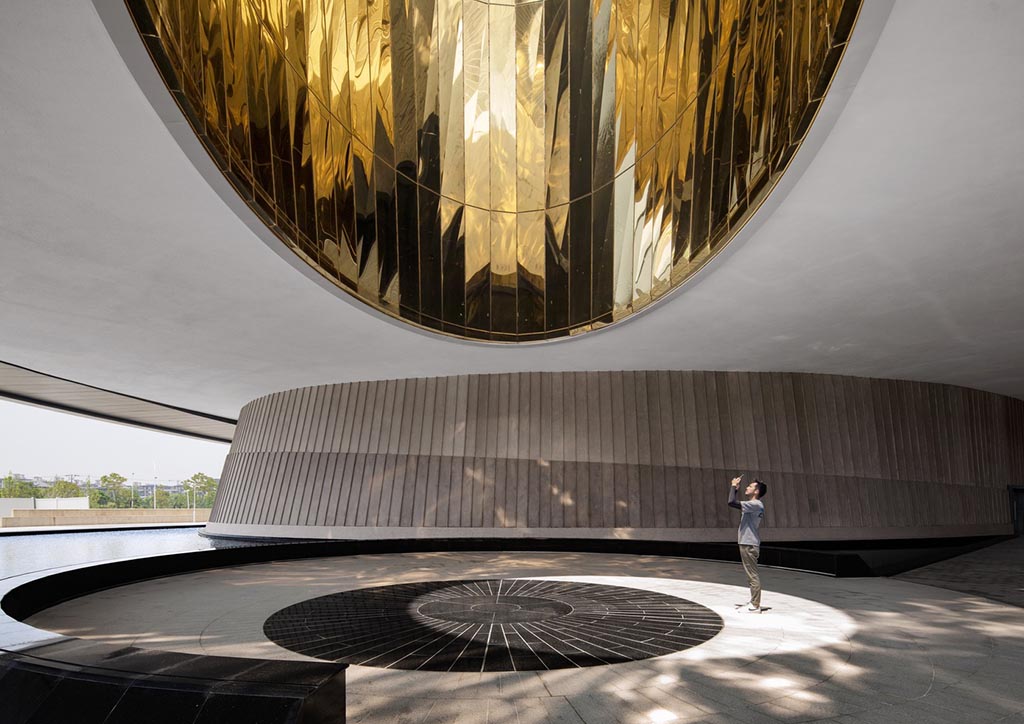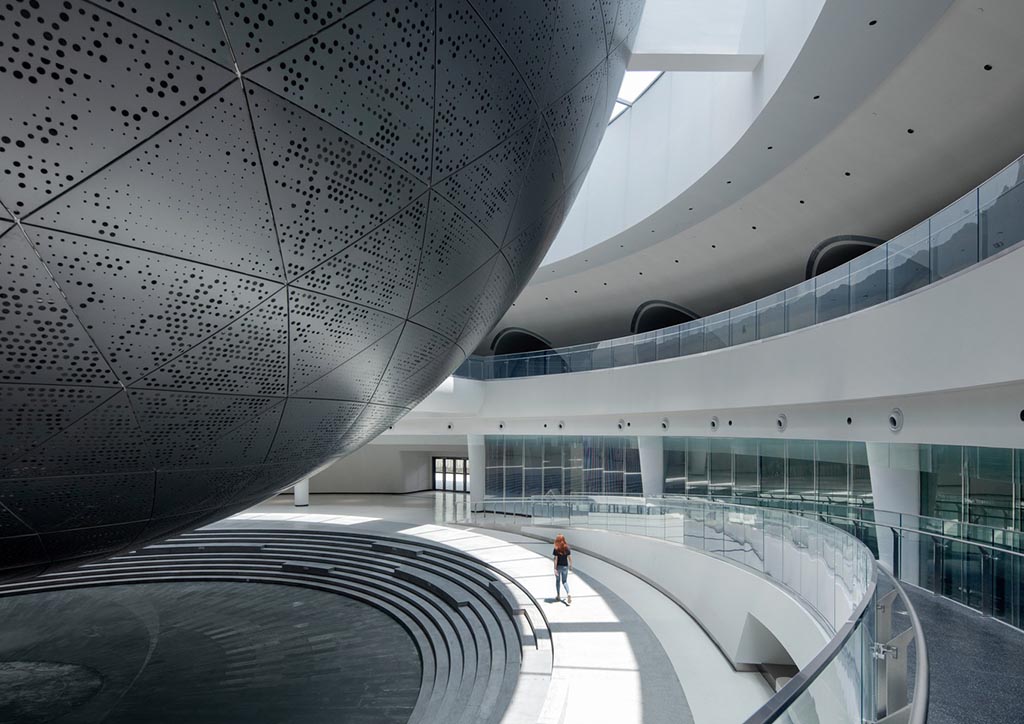
Astronomy Museum in Shanghai is the Largest in the World
Shanghai Astronomy Museum’s structure is shaped like no other. From the outside, it appears to be a gigantic spaceship and it couldn’t be more fitting. With no apparent straight lines or right angles, its most distinct feature is there are three overlapping arcs that remind you of celestial bodies orbiting.
The world’s largest astronomy museum has an astounding floor area of 420,000 sq. ft. and would guarantee hours and hours of leisure time as visitors observe and learn more about the various elements of astronomy, whatever their age or education level. New-York based studio Ennead Architects designed this incredible structure, with the goal to embody the infinite facets of the cosmos.

“The foundational design concept of the Shanghai Astronomy Museum was to abstractly embody within the architecture some of the fundamental laws of astrophysics, which are the rule in space. Once we embraced the idea of a set of curvilinear forms, we capitalized on every opportunity to make it the very basis of the building and experience.” – Thomas J. Wong, Ennead Architects design partner

Ennead Architects crafted the building to have three arcs that reflect the sun, moon and the stars. Visitors would first come upon The Oculus, which situated above the museum’s main entrance. It is designed to reflect the passing of time where there is a circular opening made out of golden panels, inviting in sunlight and illuminating the room throughout the day. Most gallery spaces are positioned on one side of the entrance hall, and the planetarium theater is situated on the other side.

The planetarium is uniquely shaped like a Sphere that is suspended above a small auditorium, held up by three concrete supports. Visually, it would give the feeling that this massive Sphere is floating, as if to defy the laws of gravity.
The main entrance leads to a large entrance hall and reception, which leads to a curving ramp that reveals various exhibitions and an inverted dome overhead.

This final feature is high up on the museum’s rooftop. This Inverted Dome will give a chance for visitors to experience an open and massive view of the night sky, with majestic glass panels that look downward into the museum.
“We want people to understand the special nature of the Earth as a place that hosts life, unlike any other place that we know of in the universe,” Thomas J. Wong explained.
Ennead Architects have offices in the US and China as they also designed New York’s Rose Center for Earth and Space at the American Museum of Natural History. This project was co-designed by one of the firm’s founders, James Polshek. “Polshek referred to the Rose Center as a ‘cosmic cathedral,'” Wong said. “That’s very appropriate to the experience here at the Shanghai Astronomy Museum.”
Photos from Ennead Architects


